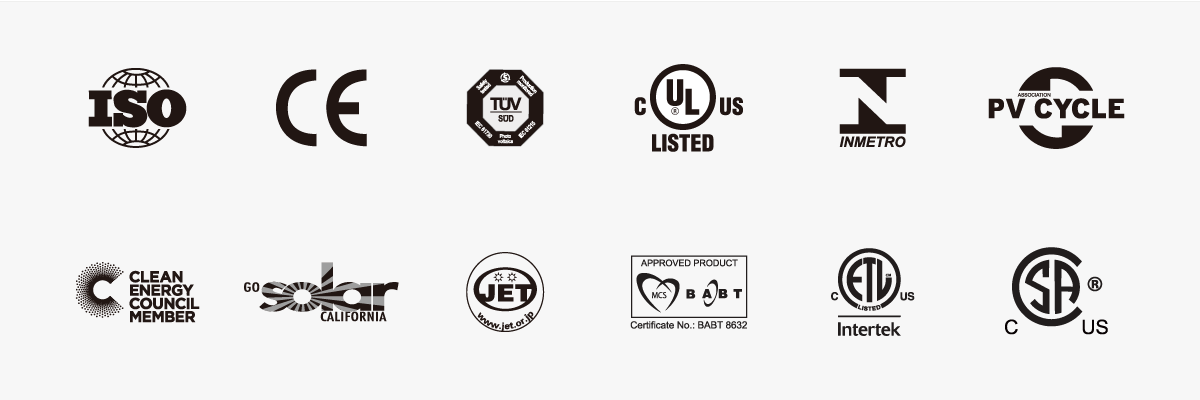Evo 6 Pro Series 120 Half Cells Solar PV Panel 615W 620W 625W 630 Wp 635 Watt
Monocrystalline N Type HJT Bifacial Double Glass Multi Busbar Photovoltaic Solar Panel Module Based on 210mm Solar Cells
Brand:
SunEvoPower Range:
615-635WMax. Efficiency:
22.4%Number of Cells:
120 Cells (6x20)Dimensions of Module L*W*H:
2172 x 1303 x 35mmWeight:
34.8kgFront Side Glass:
High transparency solar glass 2.0mmBack Side Glass:
High transparency solar glass 2.0mmFrame:
Black/Silver, anodized aluminium alloyJunction Box:
IP68 Rated, 3 DiodesCable:
4.0mm2, Portrait: 280mm / Landscape: 1300mmWind/Snow Load:
2400Pa/5400PaConnector:
MC CompatibleBifaciality:
80±5%
EVO 6 Pro 120 Half Cells 615W 620W 625W 630Wp 635 Watt Bifacial Dual Glass Solar Panel
This 120 half cell HJT bifacial double glass solar panel provides a powerful combination of increased PV module efficiency, energy savings and durable long-term performance. Featuring a 22.4% module efficiency and 615-635 watts per panel, it delivers an advanced renewable energy source with zero emissions. A temperature coefficient rating of -0.26%/°C, one of the lowest in the industry, helps generate more solar electricity output on the hottest days.

Electrical Specification
|
Maximum Power (Pmax/W) |
615 |
620 |
625 |
630 |
635 |
|
Maximum Power Voltage (Vmp/V) |
37.53 |
37.69 |
37.86 |
38.03 |
38.19 |
|
Maximum Power Current (Imp/A) |
16.39 |
16.45 |
16.51 |
16.57 |
16.63 |
|
Open Circuit Voltage (Voc/V) |
44.77 |
44.95 |
45.13 |
45.30 |
45.48 |
|
Short Circuit Current (Isc/A) |
17.19 |
17.25 |
17.31 |
17.37 |
17.43 |
|
Module Efficiency (%) |
21.7 |
21.9 |
22.1 |
22.3 |
22.4 |
|
Power Output Tolerance (W) |
0~+5W |
||||
|
Temperature Coefficient of Isc |
+0.04%/°C |
||||
|
Temperature Coefficient of Voc |
-0.24%/°C |
||||
|
Temperature Coefficient of Pmax |
-0.26%/°C |
||||
Certifications
All of SunEvo's products have been certified by professional third-party testing bodies around the world, and the testing conditions are complex and diverse, from ordinary installation conditions to various extreme weather conditions, natural environments. We pursue the ultimate in quality and provide the best guarantee for customers' assets and profits.

· ISO 9001: 2015: ISO Quality Management System
· ISO 14001: 2015: ISO Environment Management System
· ISO 45001: 2018: Occupational Health and Safety
· CE & EU declaration of conformity
· IEC 61215 / IEC 61730 Anti-PID Test for Photovoltaic Module
· IEC 61701 Salt Mist Corrosion Test for Photovoltaic Module
· IEC 60068-2-68 Dust and Sand Test for Photovoltaic Module
· UL1703 / UL 61730 – PV Module Safety Standards by UL / CSA / INTERTEK
· Italian First-Class Report on Fire Prevention
· INMETRO Ex Tariff for Brazil
· MCS / JEPC & JET / CEC(Clean Energy Council) approved PV modules / FIDE / CB / DEWA / RETIE
What's the advantage of HJT bifacial dual glass solar panels?
· Heterojunction Cell Technology
A heterojunction cell combines all the advantages of crystalline and thin-film solar technologies in a single hybrid structure. This provides one of the most effective cell passivations on the market for high levels of power and efficiency - even in hot climates.
· Lowest Temperature Coefficient
Due to the high open circuit voltage, leading lowest temperature coefficient up to -0.26%/℃, compared with PERC temperature coeffiecient of -0.38%/℃, there is an advantafe of 0.12%/℃, Considering the operating temperature of the Solar Cell exceeds the ambient temperature 10-40℃,the annual average temperature is 5-10℃,which is lower than the standard operating condition of the laboratory, then the output of HJT cell per W is about 0.6-3.9% higher than that of bifacial PERC cell.
· Higher Bifacial Efficiency
The HJT data show that the Bifacial efficiency rate is as high as 93-95%, while the Double side PERC rate is only 75%+. Taking into account the 10%-20% backside irradiation and the difference in the double-side rate of the cells, the output of HJT cells per watt is about 3%-6% higher than that of double-side PERC cells.
· Weak Light Performance
Under the irradiation intensity below 600W/㎡, the power generation performance of the N-type monocrystalline is higher than the P-type monocrystalline by about 1-2%;Due to extremly low light induced degradation, HJT cells generates about 0.5-1.0% more electricity per W than double-sided PERC cells.